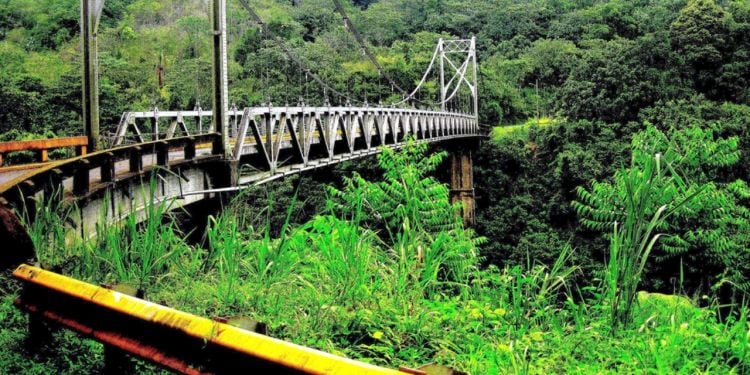Travelling around Costa Rica

Travelling around Costa Rica is easy and relatively affordable, and you can take your pick of transport options, depending on your budget and requirements. Read this article to find out more about various means of travel.
Costa Rica has arguably one of the best public transportation systems in Central America, and the efficient bus network is particularly popular, as almost every region is accessible by road. Catching a bus also leaves the responsibility of maneuvring the roads and traffic to an accustomed driver, while you can relax and enjoy the beautiful scenery.
Bus
Local buses travel pretty much everywhere within city limits, and you simply pay the driver when you jump on. Many buses in downtown San José, as well as the countryside, are quite old and in the style of school buses. Some do not have bells to signal when you wish to stop, so don't be afraid to do as the Costa Ricans and let out a whistle or call out 'parada' (stop) when you want to get off.
Intercity buses are also affordable, organised and widely available. So, if you fancy visiting nearby towns while you are living in Costa Rica, taking the bus is a surprisingly comfortable option and, as the bus system is government-subsidised, it can cost less than US$20 to reach anywhere in the country, including neighbouring borders.
Only certain bus companies allow you to purchase tickets or select seats in advance (you buy tickets at bus stations or ticket offices). However, there are hourly departures to most popular destinations from San José, and the bus system generally runs on schedule, so it's advisable to arrive early to buy a ticket, especially if you wish to travel over a weekend.
Although there is often no toilet onboard, bus drivers make bathroom and snack stops. In recent years, many companies have acquired more modern, air-conditioned buses that are used for long trips or frequently-travelled routes.
When you're taking a bus, it's advisable to keep your belongings with you or leave them in a place where you can always see them.
Shuttle service
There are several shuttle companies, such as Interbus and Grayline, that offer door-to-door, air-conditioned services between hotels/airports in most popular destinations. It's an efficient way to get between major cities, as you can reserve tickets in advance online or call to reserve your seat a few days before you travel. The minibuses seat up to 14 people, take regular breaks for passengers to use a restroom and buy food.
Taxi
Until you know your way around the city where you are living, it can be a good idea to take a taxi, as Costa Rica doesn't have many street signs and there are very few addresses.
Locations are usually defined by well-known landmarks, such as a nearby church (almost every town in Costa Rica has a church in the centre). People usually describe locations in terms of their proximity to a reference point, such as '400 metres north of the church', or '250 metres west of the cemetery'. Sometimes, an address can even be referenced to a landmark that no longer exists, but many taxi drivers will be aware of historical landmarks.
Taking a taxi in Costa Rica is a cheap and convenient way to travel, as you can hail a cab 24/7 and a taxi will get you to your destination quicker than a bus. Taxi fares are based on the journey distance and the traffic, or you can even hire a taxi for a whole day.
It's advisable to only take official taxis, which are red in colour and have a yellow triangle on the door, as only these taxis are regulated by law and are required to use a meter, so you know you will be charged a fair price.
A meter is commonly nicknamed a 'Maria' in reference to the Virgin (and hopefully her honesty). Some fraudulent drivers try to get away with not using the meter, so be sure to always check that the Maria has been turned on when you start your journey, or you could be cheated into paying a larger fare. If a driver refuses to turn on the meter, get out and hail another.
Pirate taxis come in all models and colours, and are not always equipped with meters so will charge a fare by the kilometre. If you do take one of these, it's best to agree on a price before you start your journey.
You shouldn't have any trouble finding a taxi in most metropolitan areas ' there are thought to be over 5,000 licensed taxis in the capital of San José. However, it is difficult to ascertain how many pirate taxis are operating.
Train
In San José, there is now an urban train, which is also known as the commuter rail, as the schedule is designed for commuters ' trains only run from Monday to Friday during rush hours (5.30am-9.00am, and 3.30pm-8pm).
This is a very efficient and comfortable option, as it travels along three long routes and eliminates the need to catch several buses to get to destinations.
Airplane
If time is of the essence and money is no concern, then you can save precious hours by flying between destinations in the country. The Pacific and Atlantic oceans are only 45 minutes away from each other by air, as opposed to three to four hours by land.
Costa Rica's two domestic airlines ' Nature Air and Sansa ' fly to a number of regional airports in popular destinations such as Arenal, Tamarindo, Tortuguero, Limon, Quepos, Golfito, Tambor. And you can even charter planes for private groups!
You may find that fares on Sansa are cheaper, as it's government-owned and subsidised.
Useful links:
Expat.com ' Transports in Costa Rica Forum
Ministerio de Obras Públicas y Transportes www.mopt.go.cr:10039
Consejo de Transporte Publico www.ctp.go.cr
Bus lines www.visitcostarica.com









